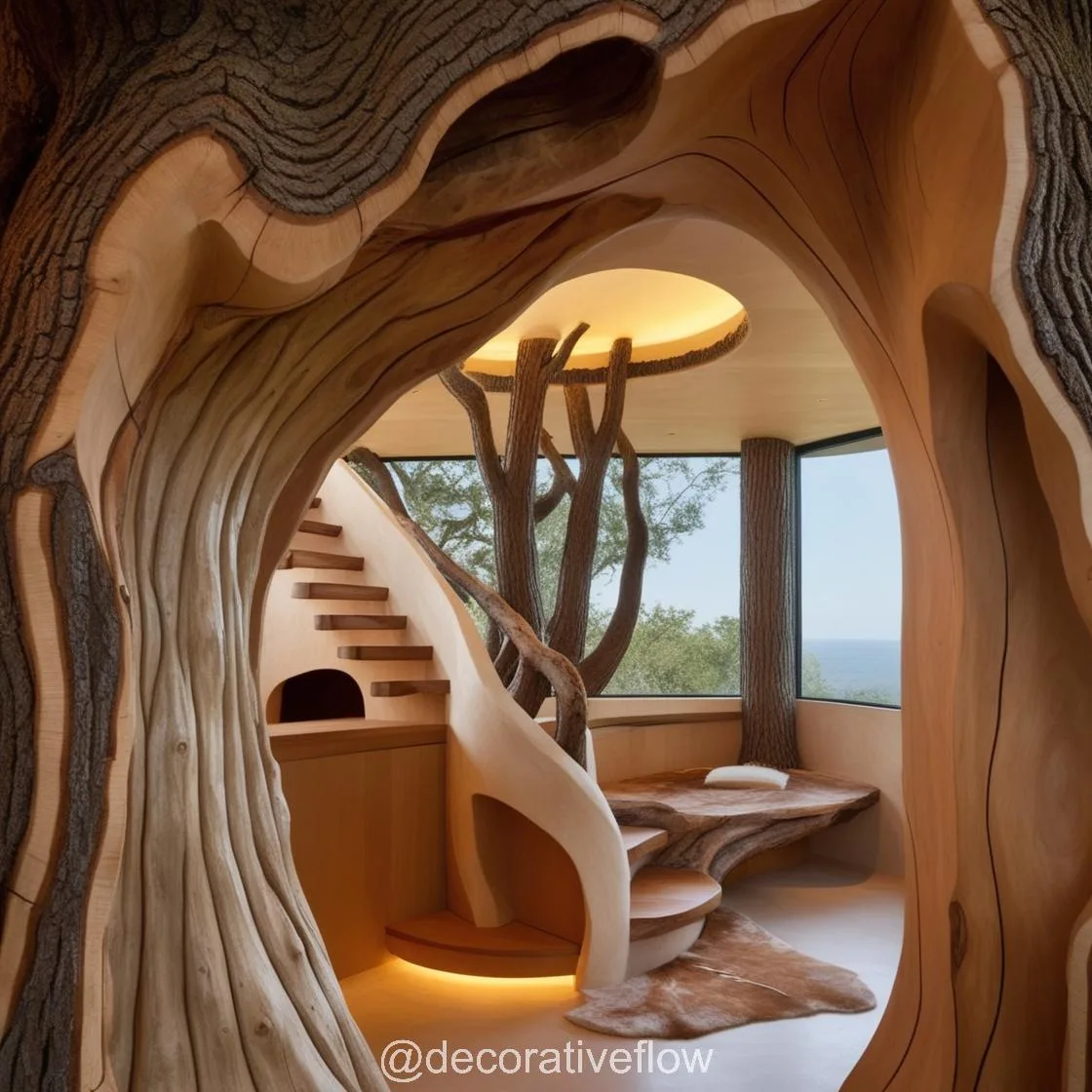In the ever-evolving world of architecture, the blending of natural elements with modern design has become a focal point for many architects, designers, and homeowners alike. One such innovation that is gaining popularity is the creation of tree shaped doorways. These remarkable structures are a fusion of nature’s elegance and the precision of architectural craftsmanship, providing a unique aesthetic experience. Tree shaped doorways are a celebration of the organic world, offering a whimsical yet sophisticated element that transforms ordinary spaces into extraordinary ones.
The concept of tree shaped doorways goes beyond mere decoration; it serves as a symbol of the connection between humanity and the natural world. Trees have long been revered in various cultures for their symbolism of life, growth, and renewal. When this symbolism is integrated into architectural designs, particularly in doorways, it evokes a deeper connection with the environment. This article explores the creative potential of tree shaped doorways, the materials used to bring them to life, and their broader significance in the field of architecture. We will also delve into how tree shaped doorways are changing the way we experience our living spaces.
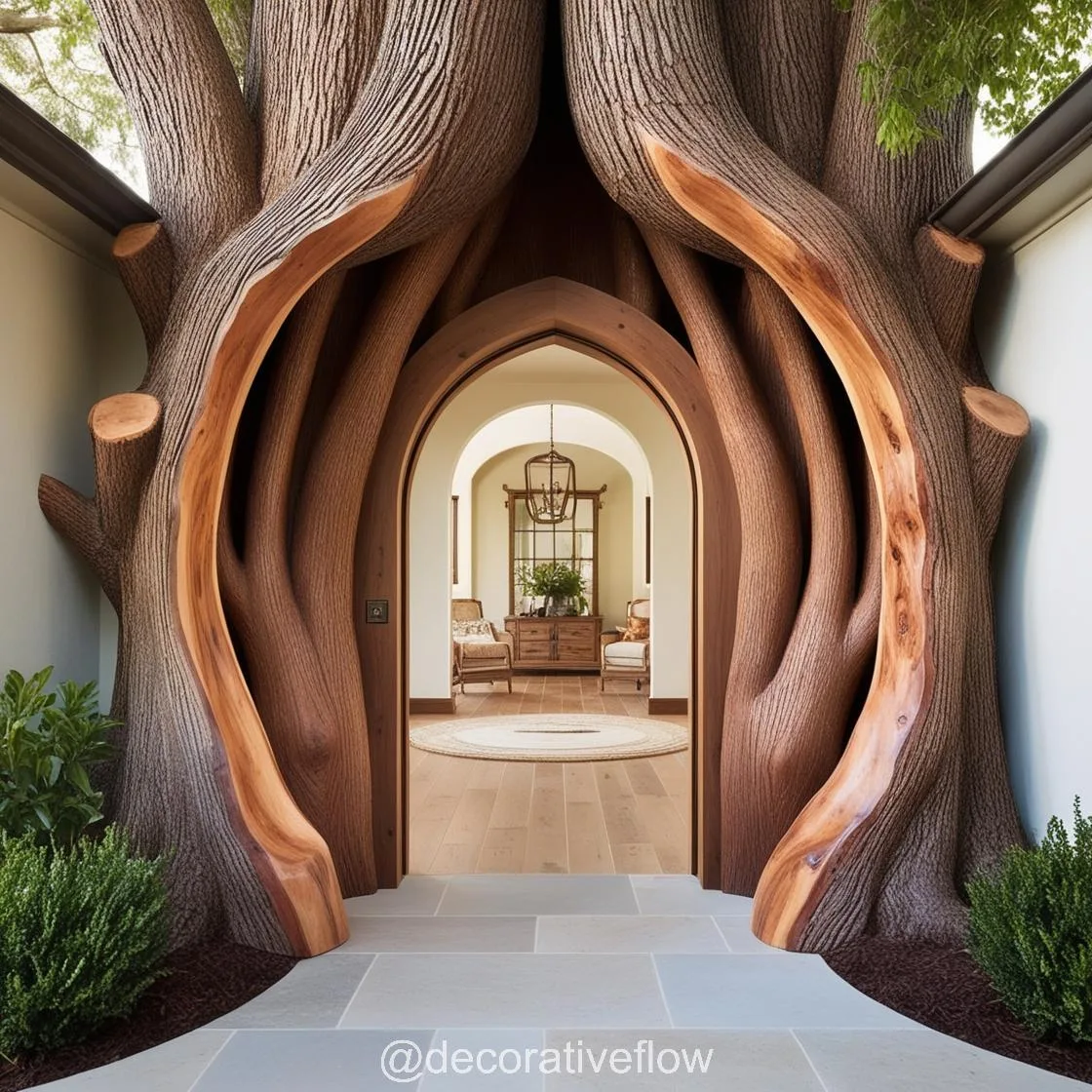
The Concept of Tree Shaped Doorways: Where Architecture Meets Nature
Tree shaped doorways are a direct homage to the natural world. These doorways mimic the shapes and forms of trees, often resembling the trunks, branches, and leaves of a tree, and are typically created with intricate details that highlight the organic beauty of nature. In some designs, the doorway may take the form of a full tree trunk, while in others, it may feature branching designs that extend above or around the entrance. The idea behind these doorways is to create an immersive experience, drawing people into the space by evoking the feeling of walking through a living, breathing organism.
The influence of nature on architecture is nothing new, but the emergence of tree shaped doorways represents a bold step in further embracing nature’s influence in the built environment. These doorways not only enhance the visual appeal of a home or building but also promote a deeper appreciation for the environment. As urbanization continues to increase, integrating elements like tree shaped doorways into designs offers a refreshing break from the harsh, artificial aspects of modern life.
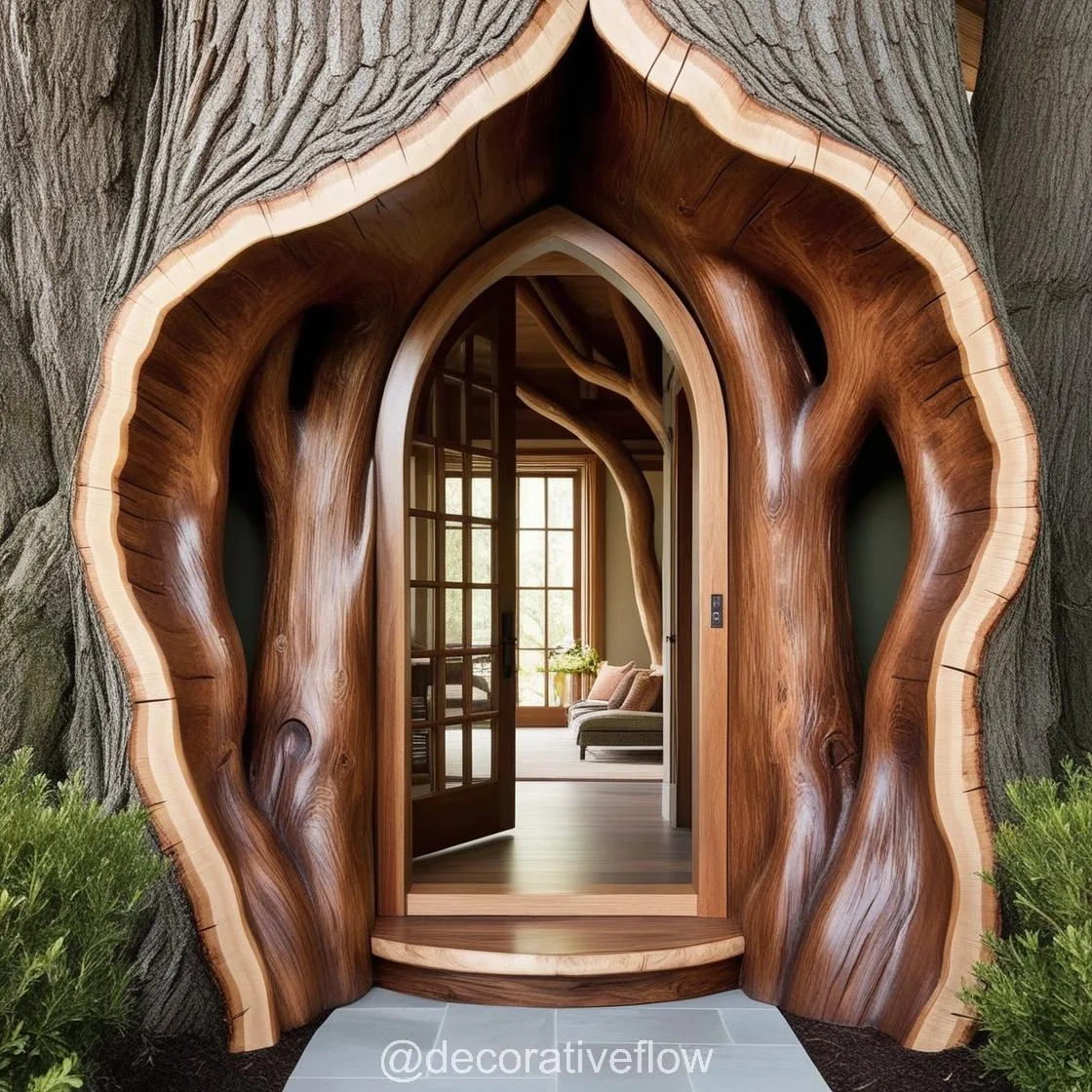
Design Elements of Tree Shaped Doorways
Tree shaped doorways are not just about appearance; they are meticulously crafted to incorporate various aspects of tree-like features that contribute to their unique charm. The following elements are often considered when designing a tree shaped doorway:
- Organic Shapes and Forms: The most striking feature of tree shaped doorways is the organic forms they take. These forms are designed to mimic the flowing lines and curves found in the trunks, branches, and leaves of trees. Unlike the straight, rigid lines typically seen in conventional architecture, these designs evoke a sense of fluidity and natural growth. This can create a more harmonious flow between the structure and its surrounding environment.
- Intricate Detailing: To capture the essence of trees, many tree shaped doorways feature detailed textures that mimic the bark of trees, the veins of leaves, or even the knots and imperfections found in natural wood. These intricate details enhance the doorway’s authenticity and contribute to its visual appeal, making it not only a functional entrance but also a piece of art.
- Materials Used: Wood is the most common material used in crafting tree shaped doorways due to its natural connection to trees and its versatility in shaping. However, other materials such as metal, glass, and concrete can also be used to create tree shaped designs. For instance, metal might be used for the frame to provide structural support, while glass could be incorporated to allow light to filter through the branches. The choice of materials depends on the desired aesthetic and functionality of the doorway.
- Symbolism of Growth and Renewal: The tree is often seen as a symbol of life, growth, and renewal. By incorporating a tree shaped doorway into an architectural design, homeowners and architects are symbolically inviting growth and vitality into the space. The shape and presence of trees are also known to evoke feelings of serenity and calmness, making the doorway not just a functional element but an emotional experience for those who pass through it.
- Integration with the Environment: Tree shaped doorways are often designed to complement their natural surroundings. In homes surrounded by lush greenery or outdoor landscapes, these doorways can create a seamless transition between the indoor and outdoor environments. The design can mimic the look of trees and plants in the vicinity, creating a cohesive and harmonious visual experience.
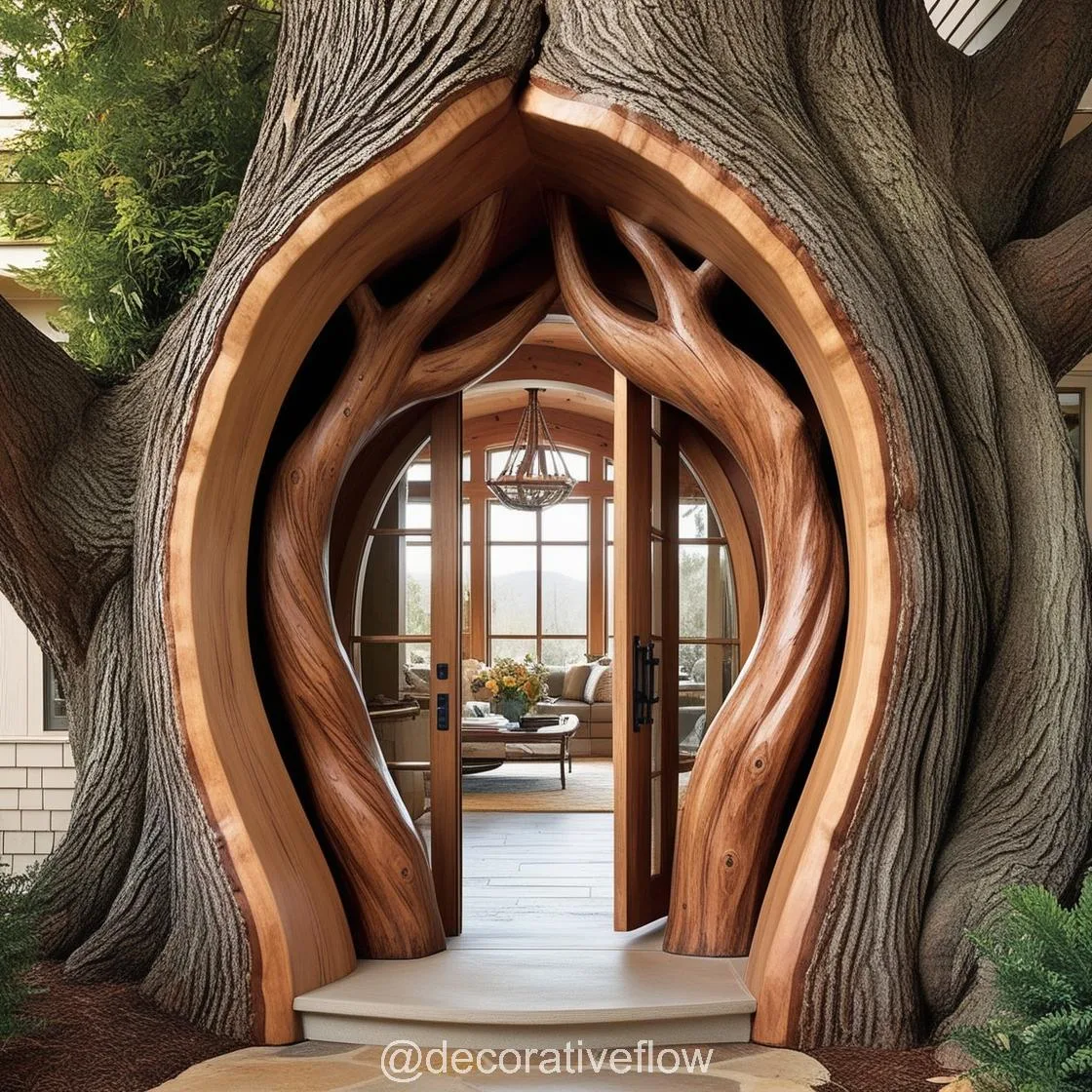
Tree Shaped Doorways in Different Architectural Contexts
Tree shaped doorways can be incorporated into various types of architecture, each bringing its own flair to the design. Whether in a modern urban setting, a rustic cabin, or a grand public building, tree shaped doorways provide an organic contrast to the surrounding architecture.
- Residential Architecture: In residential spaces, tree shaped doorways can serve as a statement piece, transforming the entrance to a home into a breathtaking focal point. These doorways are often used in houses that emphasize eco-friendly, sustainable designs, and can be found in homes located in wooded areas or rural settings. For example, a tree shaped doorway might be the perfect addition to a house built with reclaimed wood or designed with a focus on biophilic principles, which seek to bring nature indoors.
- Commercial and Public Spaces: In commercial or public spaces, tree shaped doorways can create an inviting atmosphere, making the entryway more welcoming. This is particularly effective in spaces like botanical gardens, eco-resorts, or art galleries, where nature and artistic design go hand in hand. A tree shaped doorway in these settings can enhance the overall experience of the space and deepen the connection between people and their surroundings.
- Urban Architecture: In urban settings where green spaces are limited, tree shaped doorways can serve as a reminder of the importance of nature in city life. A tree shaped doorway in an apartment complex or urban park could help introduce elements of nature into the concrete jungle. These doorways, often combined with green walls or vertical gardens, help urban dwellers reconnect with the environment in an aesthetically pleasing way.
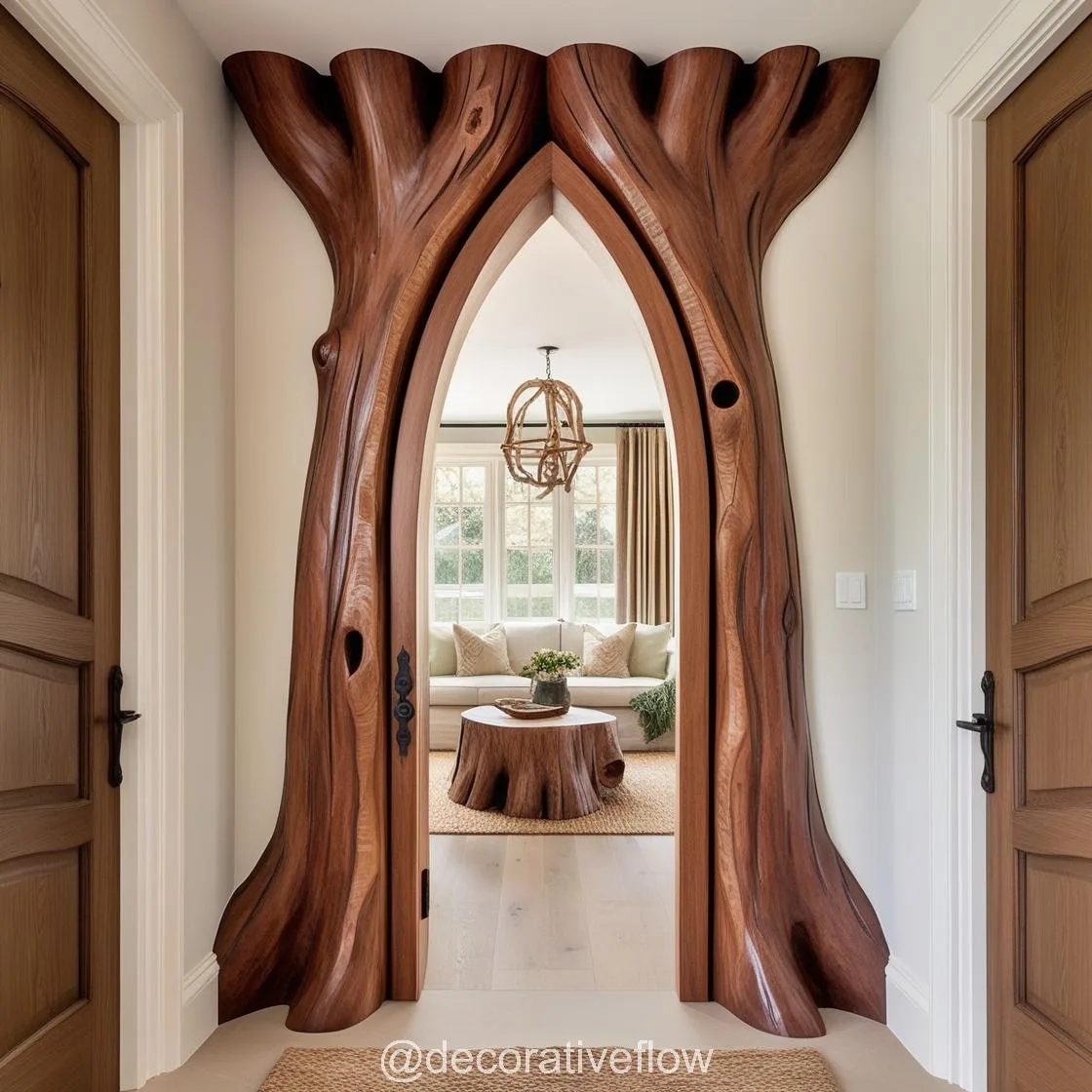
Benefits of Tree Shaped Doorways
The integration of tree shaped doorways into architectural design brings a multitude of benefits, both practical and emotional.
- Aesthetic Appeal: The primary benefit of tree shaped doorways is their unique and striking aesthetic. These doorways are visually captivating and provide a sense of beauty and elegance that is hard to replicate with more conventional designs. Whether carved intricately from wood or made with a combination of materials, these doorways serve as a work of art that immediately draws attention.
- Emotional Connection to Nature: In an increasingly urbanized world, many people feel disconnected from nature. Tree shaped doorways offer a way to reconnect with the natural world, evoking feelings of calmness, peace, and renewal. The presence of such natural symbolism can have a positive psychological effect on the people who interact with it.
- Sustainability: By incorporating natural materials like wood, stone, or metal, tree shaped doorways can promote sustainable design practices. Reclaimed wood, for example, is often used in the creation of these doorways, reducing the environmental impact of new materials. Additionally, using locally sourced materials ensures that the design is in harmony with the surrounding environment.
- Symbolism and Storytelling: Trees have been revered across cultures and time periods as symbols of life, strength, and wisdom. A tree shaped doorway tells a story and conveys meaning that goes beyond its visual appeal. It serves as a reminder of the interconnectedness of all living things and can represent growth, prosperity, and renewal.
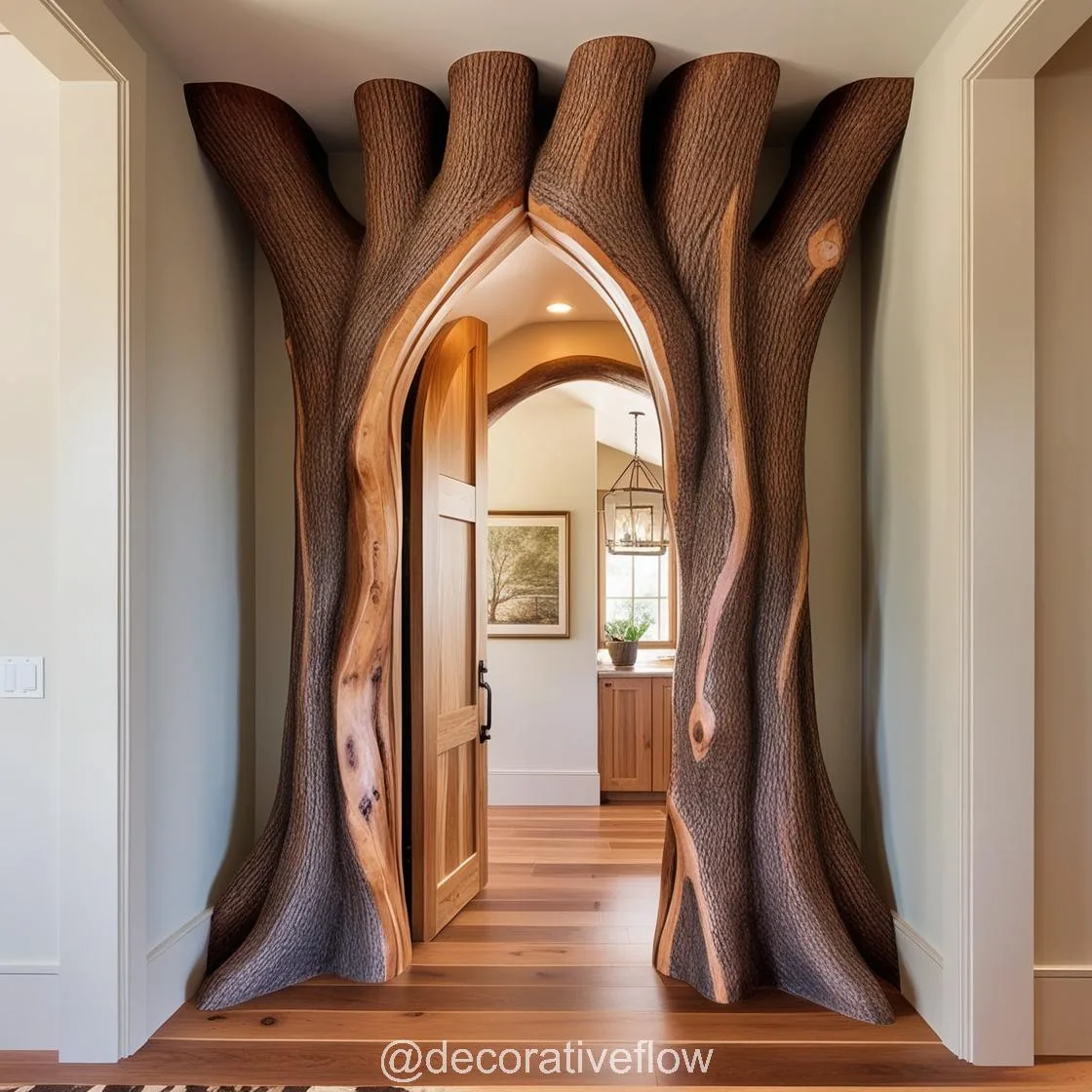
Conclusion: A Timeless Fusion of Architecture and Nature
Tree shaped doorways offer a perfect fusion of architecture and nature, demonstrating that the built environment need not be disconnected from the natural world. They serve not only as functional entrances but also as symbols of growth, renewal, and connection to the earth. Whether crafted from wood, metal, or other materials, tree shaped doorways bring a sense of beauty, artistry, and serenity into any space.
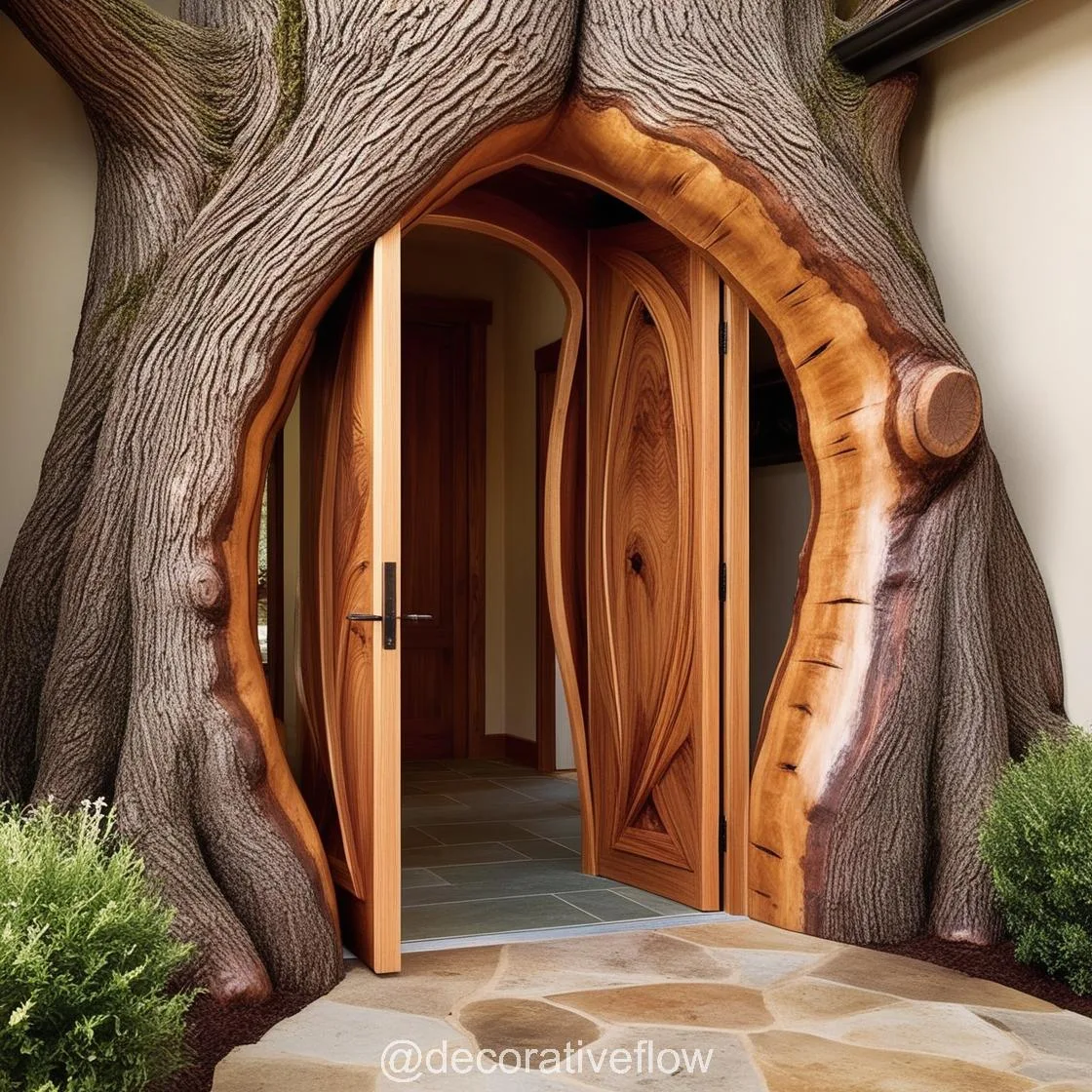
As architecture continues to evolve, embracing natural forms and sustainable practices will only become more important. Tree shaped doorways are a testament to this trend, offering an elegant, whimsical, and meaningful way to integrate nature into our everyday lives. Whether in residential homes, public spaces, or commercial buildings, tree shaped doorways remind us of the beauty that nature has to offer and the deep connection we share with the environment.

